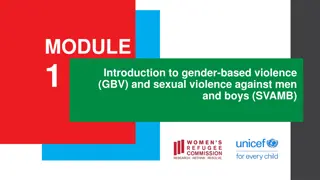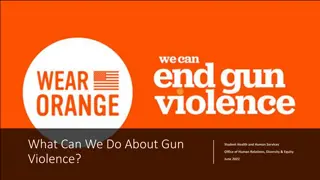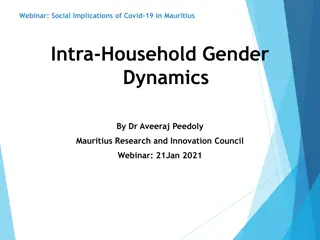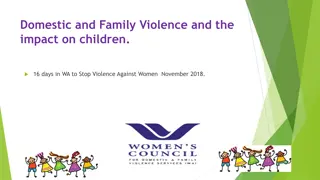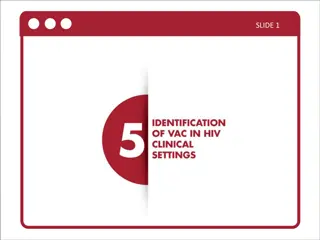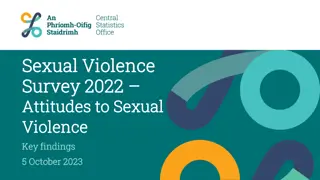Tackling Knife Crime: A Community Approach to Preventing Violence
Serious violence, particularly knife crime, poses a significant challenge in the UK. The rise in violent offenses, especially those involving weapons, necessitates a proactive approach to prevent young individuals from joining gangs or carrying weapons. Initiatives such as the Serious Violence Strategy highlight the importance of community involvement in preventing violent crimes and supporting positive activities for youth. Starting conversations with young people about the dangers and myths surrounding carrying knives is emphasized as a crucial step in addressing this issue.
Download Presentation

Please find below an Image/Link to download the presentation.
The content on the website is provided AS IS for your information and personal use only. It may not be sold, licensed, or shared on other websites without obtaining consent from the author. Download presentation by click this link. If you encounter any issues during the download, it is possible that the publisher has removed the file from their server.
E N D
Presentation Transcript
SERIOUS VIOLENCE SERIOUS VIOLENCE What better way to stop knife crime than by stopping young people from picking up knives in the first place? Former Home Secretary Amber Rudd
A SERIOUS PROBLEM A SERIOUS PROBLEM Serious violence is violence that causes injuries so severe they require hospital treatment. Although violent crime in the UK has been falling steadily since its peak in the mid-1990s, from 2014 onwards certain types of violent crime has been rising again, especially offences involving knives and guns. There were 46,937 knife offences across the UK in the year to June 2021. In the year to March 2021, there were 221 killings involving knives. Young men are the most likely group to be involved in knife crime, both as victims and perpetrators.
CAUSES CAUSES The rest is mainly due to drug-market violence and the growing phenomenon of county lines , where gangs set up drug-dealing operations outside their usual operating area. Around half the rise in robbery, gun and knife crime is due to better police recording of offences.
A GOVERNMENT PRIORITY A GOVERNMENT PRIORITY Homicides and gun and knife crime account for just 1% of all recorded crime, but their impact on society is huge. Because of this the government has made tackling serious violence a top priority, and in April 2018 set a new Serious Violence Strategy backed with 40m of Home Office funding. This strategy makes clear that communities have a key role to play in tackling violent crime. It states: In particular this strategy needs the support of communities thinking about what they can themselves do to help prevent violent crime happening in the first place and how they can support measures to get young people and young adults involved in positive activities.
WHAT CAN YOU DO? WHAT CAN YOU DO? Charities that work to tackle violent crime all agree that the best way to tackle gangs, gun and knife crime is by stopping young people from joining a gang or carrying a weapon in the first place. So, if you have contact with young people, perhaps as a parent or family member, or in a voluntary capacity as a youth club or community leader, what can you do to prevent the young people that you know from carrying a knife or joining a gang? Answer: START A CONVERSATION Plenty of young people believe that carrying a knife will help them protect themselves, but in reality, many young people end up injured or worse by their own knives. Many young people also believe that if you stab someone in a safe place like the bum they won t be seriously hurt. This is also wrong. So, get them talking about weapons; bust some myths, and improve their understanding of the risks. Here s how:
GET CLUED UP GET CLUED UP Before you start the conversation, make sure you know what you are talking about. Here s some key facts to use: If you are caught by police carrying a knife, even if it was for your protection or you were carrying it for someone else, you will be arrested and prosecuted If someone is injured or killed by a knife in your presence, you could be prosecuted even if you didn t touch the knife. You could even go to prison for murder in what is called joint enterprise If you use a knife, even in self-defence, you could be charged with assault with intent, or even worse It is illegal for anyone under 18 to buy a knife of any sort It is a criminal offence to have in a public place any item that has a blade, or is sharply pointed It is not legal to carry a knife for self- defence If a knife punctures an artery you can bleed to death within five minutes
GET CLUED UP GET CLUED UP A criminal record for knife use or possession can stop you from being accepted into college or university, and can make it much harder to get a job. Many countries will refuse to let you in, such as the USA, Canada and Australia and more There is no safe place to stab someone. A wound in the arm or leg can still kill someone if an artery is severed Carrying a knife significantly increases your chances of getting stabbed yourself But - tradespeople such as fishermen or chefs can carry knives if they need them for their work. Some people can also carry them for religious reasons, or wear them as part of a national costume Police can stop and search anyone they believe is carrying a knife You can go to prison even if you didn t use the knife
HAVING THE CONVERSATION HAVING THE CONVERSATION All young people should be encouraged to have this conversation, even if you or they don t think it is relevant to them. It is relevant to ALL young people. The conversation you have today could save someone s life tomorrow. Getting started Find the right time and place somewhere the young person feels safe and neither of you has to rush off anywhere. Make sure you won t be interrupted. Let them know you are not there to judge them. Listen Don t expect or demand them to talk. If they do, be patient and try not to react straight away to what they tell you. Let them have the voice in this conversation. Encourage them to share their fears And, where appropriate, share your own tell them how much you worry about their safety and their future.
HAVING THE CONVERSATION HAVING THE CONVERSATION Be positive Reassure them that the vast majority of young people don t carry knives. If they are scared of someone or something, tell them it can be dealt with without the need for them to carry a knife. Stick to the facts They may not think that you know what you are talking about, so make sure you have properly prepared and know your facts, as outlined before. You will gain credibility in their eyes if you sound knowledgeable and clued-up. Be clear about false bravery Make sure you emphasise that walking away from a confrontation or fight is the braver thing to do. If someone pulls a knife on them, the safest and wisest thing to do is to walk away. Children fear backlash from their peers, and fear being targeted by a wider group for not stepping up to a situation or individual. Remind them that this moment will pass and attention will move away from them in time. Standing their ground can have lasting, devastating consequences.
WHAT ARE THE PENALTIES? WHAT ARE THE PENALTIES? The average sentence for knife possession is between 7 and 8 months If you are caught with a knife more than once, you will automatically go to jail for at least 6 months If you threaten someone with any type of weapon, including acid, you will automatically go to jail for at least 6 months no matter what age you are If you murder someone, you could go to prison for life and you will have to serve at least 25 years The maximum sentence for carrying a knife is 4 years
HAVING THE CONVERSATION HAVING THE CONVERSATION The impact If they were to be stabbed, who else would be affected by that? Help them to think through what would happen and what impact it could have on others, such as their siblings, parents and friends. Make it relevant Refer to recent news stories or local events. Suggest alternatives Tell them about fun, safe activities for young people in their area. If they are already involved in knife crime If you learn some worrying things about the young person, try not to react badly. You could end up pushing them away. Use the conversation to help them understand the risks and consequences they could go to prison for life, or end up dead themselves. If you believe they have actually used a knife on someone, you must report it to the police or Crimestoppers. Better that they end up in trouble with the law now than injured or killed later.
DISPOSING OF KNIVES DISPOSING OF KNIVES Turning their backs on crime Make sure they know that anyone can dispose of a knife at any Word 4 Weapons knife bin, located across London and soon in Yorkshire. These bins are situated away from CCTV cameras and the Word 4 Weapons website has advice on how to safely wrap the weapon before depositing it in a knife bin.
SPOTTING THE SIGNS SPOTTING THE SIGNS Police in the West Midlands have issued a list of warning signs that might indicate a young person is carrying a knife. These are aimed mainly at parents but are useful for anyone who comes into contact with young people. 1. Have they become withdrawn from the family and/or school? 2. Is their school or college reporting worrying changes in behaviour, academic achievement or attendance? 3. Have they lost interest in positive activities such as sports clubs? 4. Do they stay out unusually late without giving a reason and are vague about their whereabouts? 5. Have they stopped seeing old friends and started hanging out with a new group? 6. Are they secretive about the contents of their bag? 7. Are they defensive if you ask what is in their possession or if they are hiding anything? 8. Has their attitude changed about carrying knives/weapons? For example, justifying it by saying people carry them for self-defence? 9. Have any items gone missing from the kitchen, tool box or garage? 10. Have you found a weapon hidden amongst their possessions?
HOW NOT TO DIE FROM A HOW NOT TO DIE FROM A STABBING STABBING A 7-minute film by BBC3 https://www.bbc.co.uk/bbcthree/clip/7f64cd8f-9528-4424-9db7-91298e76cd7a
TIPS FOR PARENTS TIPS FOR PARENTS Know what knives and other items you have in the kitchen and toolbox. Check that they are all there. Keep tabs on what is delivered to your home and look out for any online purchases. Knives can come in all manner of shapes and sizes; recently a US company was found to be advertising on Instagram, knives disguised as lipsticks and combs clearly aimed at young women. Keep engaged with kids lives; keep an eye on their social media accounts Think about searching their bag and room is there evidence of drugs, extra money, new clothes? Consider other hiding places Remember it might not be a knife but some other weapon Know where they are and who they are with Encourage them to hang out in safe areas wherever possible
REPORTING REPORTING WHAT SHOULD YOU DO IF YOU SUSPECT THAT SOMEONE YOU KNOW IS CARRYING A KNIFE? If you think that someone you know, or someone in your area, is carrying a knife, REPORT IT IMMEDIATELY to your local police on 101. You can call Crimestoppers anonymously on 0800 555 111 or report it online at Fearless.org, which is aimed specifically at young people. At both Crimestoppers.org and Fearless.org, you can pass on information about criminal or possible criminal activity without giving any personal information about yourself. In an emergency always dial 999. If you are worried about your child, you could also try talking to the families of their friends. If you re worried, chances are they have concerns about their child too. Working together can be a valuable way to look out for each other and help keep your children safe.
THANK YOU THANK YOU For more information, see www.ourwatch.org.uk/serious-violence THANK YOU FOR LISTENING


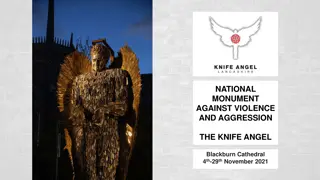


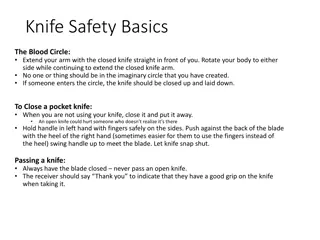
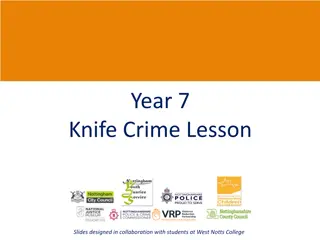





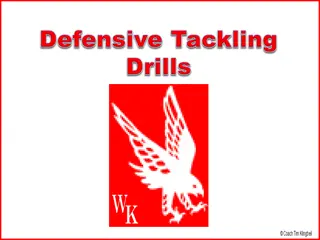

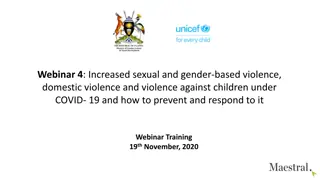








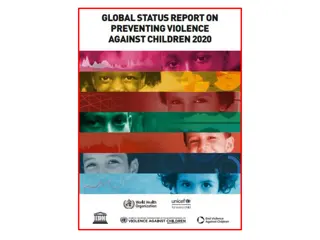
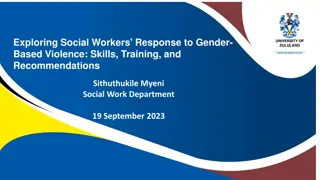


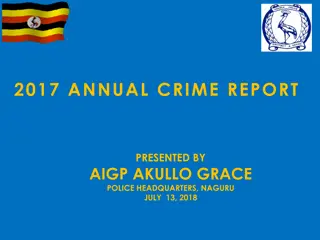
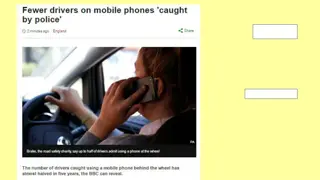
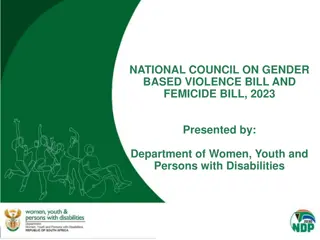
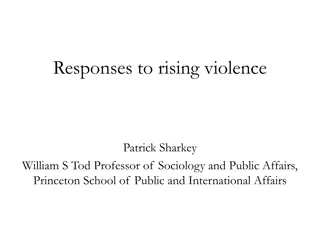





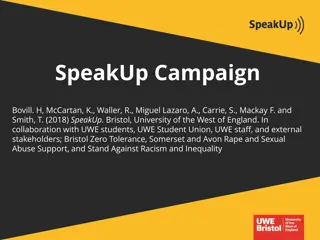
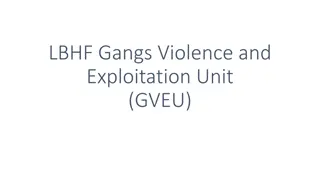

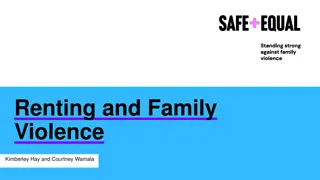


![Workplace Violence Prevention Plan in [District]: Definitions, Elements, and Implementation](/thumb/117038/workplace-violence-prevention-plan-in-district-definitions-elements-and-implementation.jpg)
